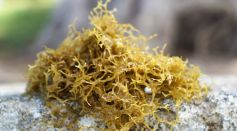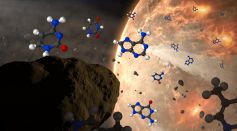Tags: Carbon
Mercury-Bound BepiColombo Spacecraft Observes Cold Oxygen and Carbon Ions Escaping the Induced Magnetosphere of Venus

MIT Develops High-Performance, Cobalt-Free Sustainable Lithium-Ion Battery

Carbon-Based Paleolithic Art Discovered in French Cave Paves Way for Precise Radiocarbon Dating

California Redwoods Revive After Wildfire Destruction Through Ancient Carbon Reserves, Revealing Remarkable Tree Survival Mechanism
Jupiter’s Moon Europa May Hold Carbon in Ocean Beneath Its Icy Shell [Study]

Ponds Are Net Greenhouse Gas Emitters Due to Methane Release, Study Reveals

Gaseous Carbon Dioxide Emerges as Surprising Instigator for Volcanic Eruptions, Offering Clear Picture of Earth's Internal Dynamics

Graphene: The Supermaterial Shaping the Future of Science and Engineering
Quantum Friction Governs the Flow of Water on a Carbon Surface, New Study Reveals

Tree Diversity May Maintain Soil Fertility, Mitigate Effects of Climate Change, Study Says

World's Biggest Known Logjam Incredibly Stores 3.4 Million Tons of Carbon, Plays an Underestimated Role in the Cycle, Study Says

What, Why, Where, and How: Science's Top 10 Great Unknowns

What Happens When Chemical Bonds Are Twisted Beyond Their Limits? Here's What Scientists Found

Edible Mushrooms Could Be the Key To Solving World Hunger, Climate Change

Novel Long-range Ordered Porous Carbon Crystal Formed Using Electron Injection

Brown Algae Takes in Carbon Dioxide and Expels It in the Form of "Fucoidan" Mucus; Could This Be the Answer to the Climate Change Crisis?

New Carbon Crystal Member Alert: How Fullertubes Joined The Family

Potential Diamond Factory May Be Existing in the Core-Mantle Boundary of Earth for Billions of Years [STUDY]

New Sorbent for Fastest Recyclable Carbon Capture System Reaches 99% Efficacy

Scientists Successfully Create the Next-Generation Wonder Material Called 'Graphyne' for Better Electronics, Optics
Most Popular

How Strong Are Tornadoes? Understanding the EF Scale and the Extreme Power Tornadoes

Glaciers Are Melting Fast: Climate Change Impact Driving Sea-Level Rise Worldwide

How Telescopes Work: Optical vs Radio vs Space Telescope Science Explained

Can the World Run Out of Water? Water Scarcity Science and Climate Impact Explained





